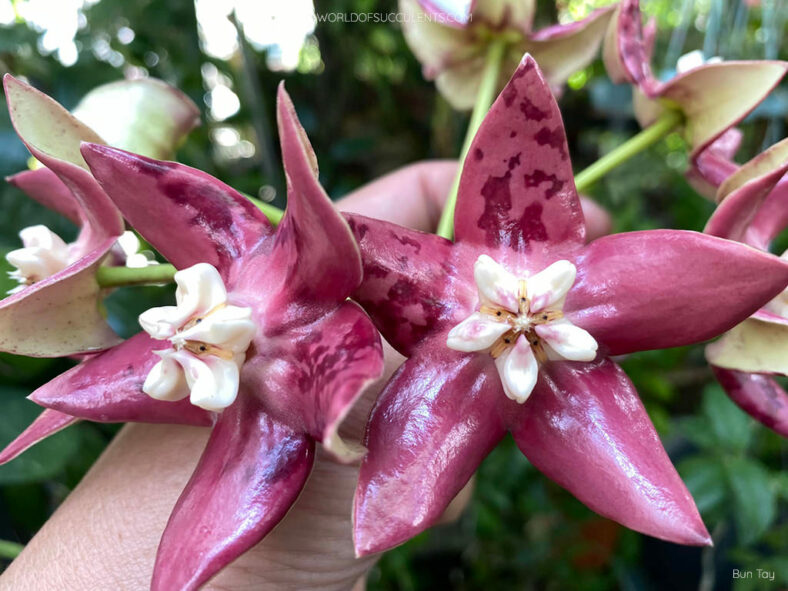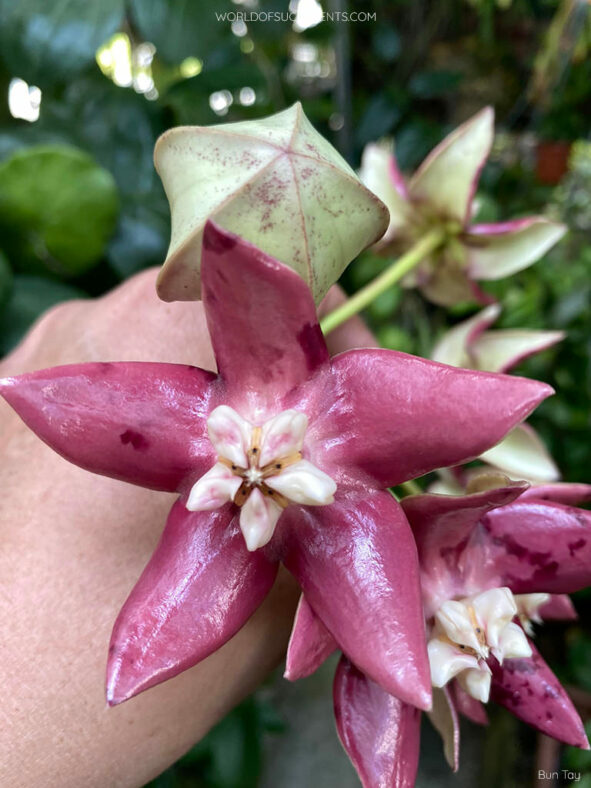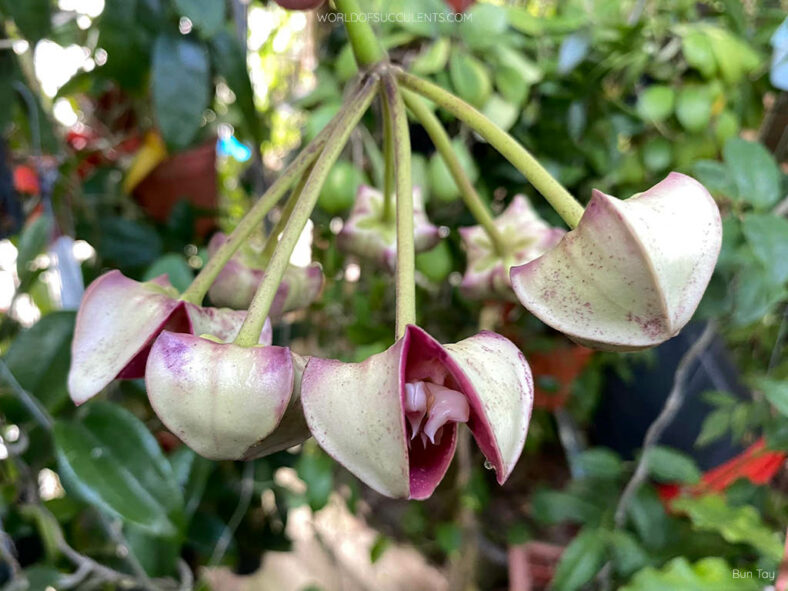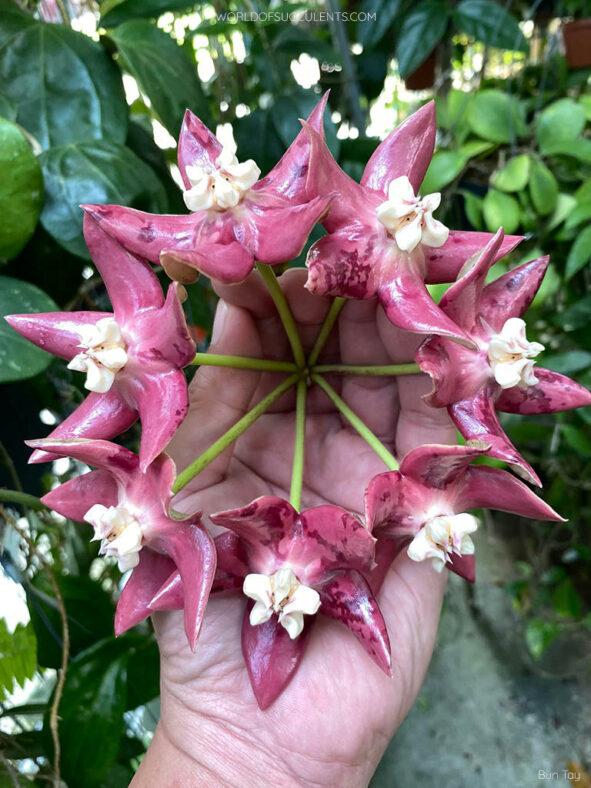Hoya imperialis is an epiphytic plant with stunning flowers, one of the largest species in the Hoya genus.
Scientific Name
Hoya imperialis Lindl.
Common Name(s)
Emperor Hoya, Honey Plant, Imperial Hoya, Imperial Wax Flower
Synonym(s)
Calotropis sussuela, Hoya imperialis var. rauschii
Scientific Classification
Family: Apocynaceae
Subfamily: Asclepiadoideae
Tribe: Marsdenieae
Genus: Hoya
Etymology
The specific epithet "imperialis" (pronounced "im-peer-ee-AL-is") means "of the empire or emperor, imperial" and probably refers to the massive corona of the flowers of this species.
Origin
Hoya imperialis is native to Indonesia (Java, Sumatra), Borneo, Malaysia (on the Malay Peninsula), and Thailand. This species generally grows in leaf litter and can be found rambling along the trunks of coastal trees and in mangrove swamps. It may also climb up treetops to obtain more sunlight.
Description
Hoya imperialis is a robust climber with woody stems that bear thick, fleshy, leathery leaves with a midrib and poorly defined lateral veins. The leaves are elliptical, measuring up to 10.8 inches (27 cm) long and 3.4 inches (8.5 cm) wide. The upper surface of the leaves is deep green, while the lower surface is light green.
During the summer, Hoya imperialis produces umbels of up to 12 stunning waxy flowers. The flowers can reach up to 4 inches (10 cm) in diameter, have either a weak or absent scent, and last up to 15 days. The inner surface of the fleshy corolla varies in color from deep purplish brown to rusty red. At the same time, the corona is creamy to pale yellow, giving the flowers a mesmerizing appearance.

How to Grow and Care for Hoya imperialis
Light: This plant should be kept indoors in bright, indirect sunlight. Although it can tolerate lower light levels, it may become weak and leggy if the light is too low, producing fewer leaves and flowers.
Soil: Well-draining soil that provides excellent aeration and does not hold too much water is most important for growing a healthy plant.
Temperature: Hoya imperialis thrives in hot and humid climates, so keep it away from drafty windows and doorways during the colder months. It grows best in USDA Plant Hardiness Zones 11a to 11b, with average minimum winter temperatures ranging from 40°F to 50°F (4.4°C to 10°C).
Watering: Since this plant is sensitive to overwatering, soak the soil thoroughly in spring and summer, but allow it to dry out before watering again. Otherwise, you will increase the risk of root rot, and your plant will not be happy. It is relatively dormant during the fall and winter and needs only moderate watering.
Fertilizing: While Hoya imperialis is not a particularly heavy feeder, it can benefit from half-strength high-potassium fertilizer every two weeks during the growing season.
Repotting: As an epiphyte, this plant has a shallow root system and needs a deep container. It also does not require frequent repotting. It prefers to be slightly root-bound, so repot it in spring only if it has outgrown its container.
Propagation: Although layering is the easiest method, propagation of Hoya imperialis by stem cuttings is the most popular method. Leaf cuttings can be more challenging, and starting the plant from seeds is the simplest yet most time-consuming method. For best results, take cuttings only when the plant is actively growing, and sow the seeds in spring and summer.
Learn more at How to Grow and Care for Hoya.
Toxicity of Hoya imperialis
Hoya imperialis is considered non-toxic, so having it around kids and pets is safe.
Forms and Cultivars of Hoya imperialis
Links
- Back to genus Hoya
- Succupedia: Browse succulents by Scientific Name, Common Name, Genus, Family, USDA Hardiness Zone, Origin, or cacti by Genus
Photo Gallery
Click on a photo to see a larger version.


